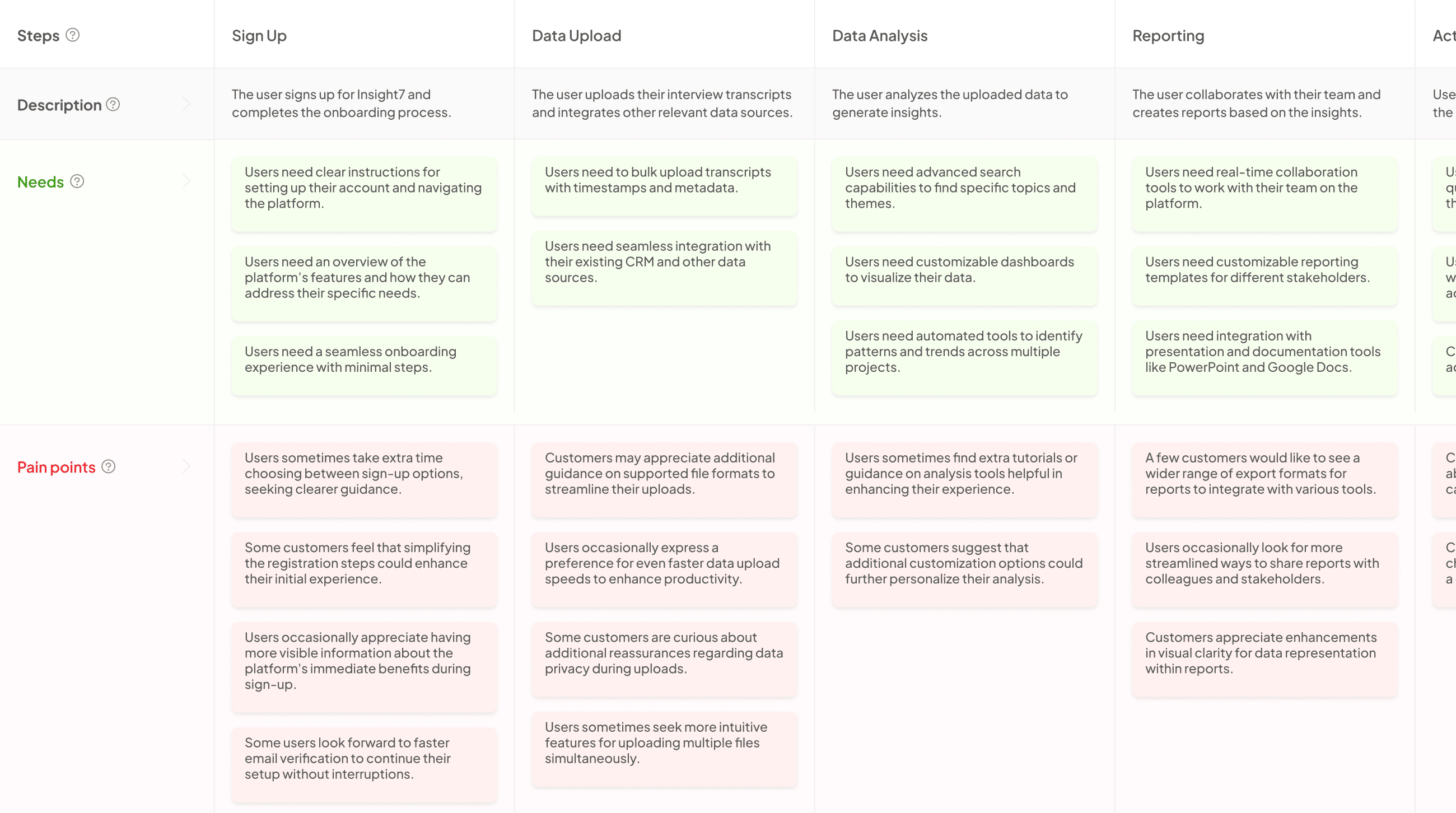Prospect Journey Mapping Best Practices
-
Odun Odubanjo
- 10 min read
In the rapidly evolving digital landscape, organizations are seeking innovative ways to harness the power of data to understand and serve their customers better. Prospect journey mapping is a critical component of this endeavor, allowing businesses to visualize the path their customers take from initial awareness to final purchase and beyond. In this write-up, we will delve into the best practices for prospect journey mapping, ensuring that your organization can create a seamless and insightful experience for both your team and your customers.
Understanding the Prospect Journey
The journey a prospect takes is not just a linear path from point A to B; it is a complex web of interactions, emotions, and decisions. To effectively map this journey, it is essential to gather comprehensive data from various customer touchpoints. This includes analyzing customer interviews, conversations, and feedback across multiple channels. By doing so, you can identify common pain points, desires, and behaviors that influence the customer’s decision-making process.
Extract insights from Customer & Employee Interviews. At Scale.

One innovative approach to gathering and analyzing this data is through AI-assisted tools. These tools can transcribe customer interactions, analyze them for sentiment, and identify key themes and patterns in near real-time. This capability not only accelerates the time to insights but also ensures that the data is comprehensive and actionable.
Best Practices for Prospect Journey Mapping
- Gather Comprehensive Data: Start by collecting data from all customer touchpoints, including interviews, surveys, and digital interactions. Ensure that this data is detailed and includes attributes necessary for effective segmentation.
- Identify Key Themes: Use AI tools or manual analysis to identify common themes across customer data. Look for patterns that reveal customer pain points, desires, and goals.
- Segment Your Customers: To tailor the journey for different customer segments, classify your customers based on relevant criteria such as revenue, employee size, and industry. This allows for a more personalized approach to addressing their needs.
- Visualize the Journey: Create a visual representation of the journey that highlights the stages your customers go through. Include the insights, pain points, and opportunities at each stage to provide a clear roadmap for your team.
Generate Journey maps, Mind maps, Bar charts and more from your data in Minutes
- Integrate Feedback into the CRM: Connect your customer feedback tools with your CRM to ensure that all insights are centralized and accessible. This integration enables a holistic view of the customer journey and facilitates better decision-making.
- Leverage Real-Time Data: Utilize tools that provide real-time updates on customer sentiment and behaviors. This allows your team to respond promptly to changing customer needs and preferences.
- Create Actionable Insights: Ensure that the insights derived from the data are actionable. Assign a score or prioritize insights based on their impact on customer satisfaction and your business goals.
- Use Insights for Content Creation: Translate the insights from your prospect journey mapping into relevant content. This could include blog posts, case studies, or marketing strategies that resonate with your audience.
- Continuously Refine the Journey: Prospect journey mapping is not a one-time exercise. Continuously collect and analyze data to refine the journey and ensure it remains relevant to your customers’ evolving needs.
Conclusion
Prospect journey mapping is a powerful tool for organizations seeking to deepen their understanding of customer needs and behaviors. By following the best practices outlined above, businesses can create a prospect journey that is insightful, personalized, and ultimately leads to a stronger connection with their customers. Remember to leverage the latest tools and technologies to gather comprehensive data, generate actionable insights, and create content that truly speaks to your audience. With a well-crafted prospect journey map, your organization can navigate the complexities of customer interactions and pave the way for sustained growth and success.
Extract insights from Customer & Employee Interviews. At Scale.








